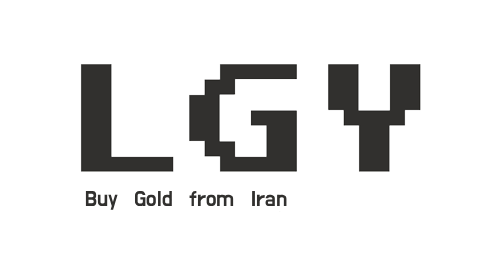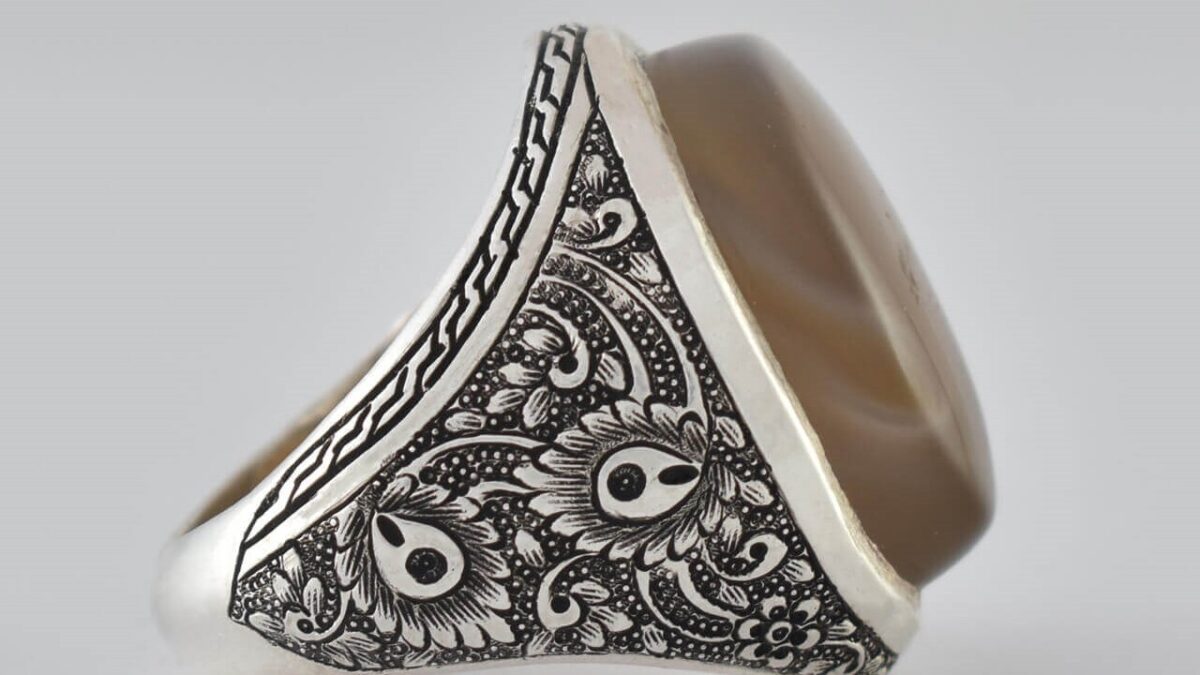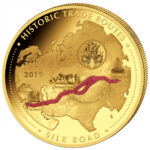
The Journey of Iranian Jewelry Through the Silk Road

How to Choose Jewelry Based on Your Zodiac Sign with Persian Astrology
Persian Gardens and Their Reflection in Jewelry Design: The Influence of Floral and Geometric Patterns
The Persian garden—an iconic symbol of paradise, order, and beauty—has long been a source of inspiration for Persian art, architecture, and jewelry. These gardens, with their meticulously arranged plants, flowing water, and geometric layouts, reflect not only the natural world but also a spiritual harmony that has influenced Persian design for centuries. In Persian jewelry, the aesthetic of these gardens is often translated into floral motifs, geometric patterns, and symbolic elements, creating pieces that capture the essence of both nature and divine order.
In this post, we explore how the beauty of Persian gardens inspires jewelry design, focusing on the floral and geometric motifs that reflect the cultural and spiritual significance of these iconic spaces.
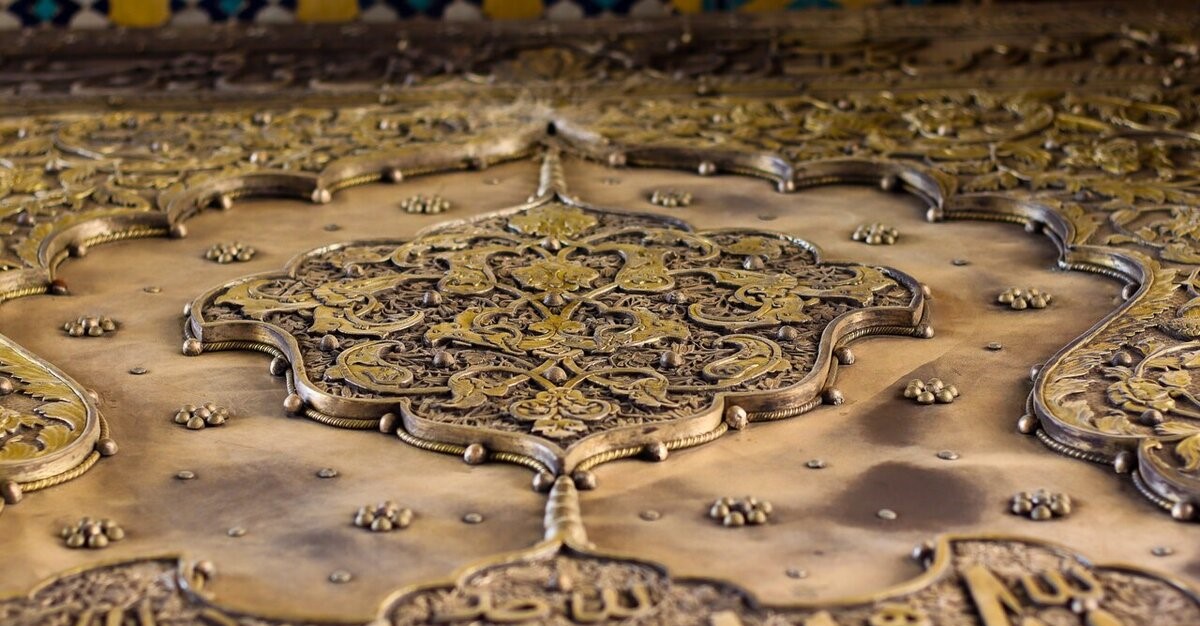
Chahar Bagh School
1. The Symbolism of Persian Gardens
Persian gardens, known as “paradise gardens” or Chahar Bagh (literally meaning “four gardens”), are designed with an emphasis on symmetry, balance, and the interplay between water, plants, and architecture. These gardens symbolize the harmony between nature and the divine, often seen as a reflection of paradise on Earth. The main elements of Persian gardens—water channels, flowers, trees, and geometric layouts—are mirrored in various forms of Persian art, including jewelry.
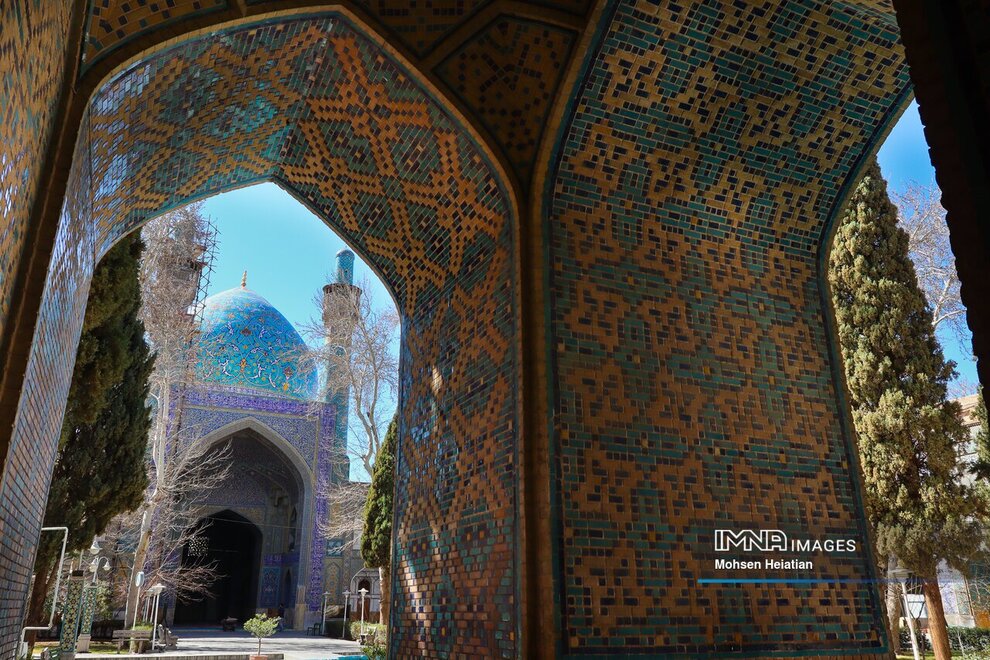
Chahar Bagh School
Floral Symbolism
Flowers in Persian culture are rich with symbolism, often representing beauty, fertility, rebirth, and eternity. Roses, tulips, lotuses, and cypress trees are some of the most common motifs in Persian garden-inspired jewelry. These floral designs serve as a metaphor for life’s fleeting beauty and the hope for eternal paradise.
- The Rose: In Persian poetry and art, the rose represents beauty and love, and its delicate form is often translated into jewelry designs. The inclusion of roses in jewelry pays homage to the gardens of Shiraz and Isfahan, known for their lush blooms.
- Cypress Trees: The cypress tree, a symbol of immortality and resilience, is another common feature of Persian gardens and is often seen in jewelry as a representation of eternal life and strength.
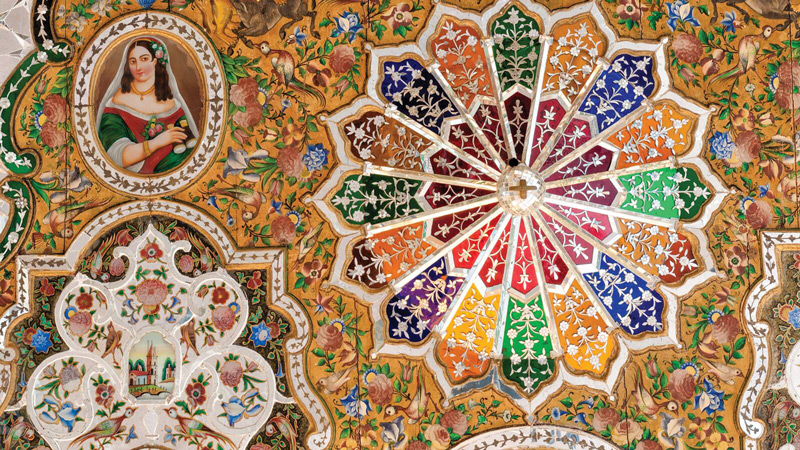
Narenjestan Qavam
Geometric Harmony
The geometric layout of Persian gardens, often divided into quadrants by water channels, symbolizes order and the cosmos. This geometric precision reflects the underlying spiritual concept of balance and harmony in both life and nature. In Persian jewelry, geometric designs often mirror the carefully arranged paths, flowerbeds, and fountains of the gardens, creating patterns that emphasize symmetry and continuity.
- Chahar Bagh Layout: The Chahar Bagh or four-fold garden design is based on a grid of four squares, each representing the elements of nature and paradise. This geometric layout is frequently reflected in bracelet designs, pendants, and rings, where symmetry and repetition of patterns evoke the harmonious design of Persian gardens.
- Water and Fountains: Flowing water is central to Persian gardens, symbolizing life and purity. In jewelry design, water motifs are sometimes represented through delicate waves or rippling patterns, often worked into metal engravings or filigree.
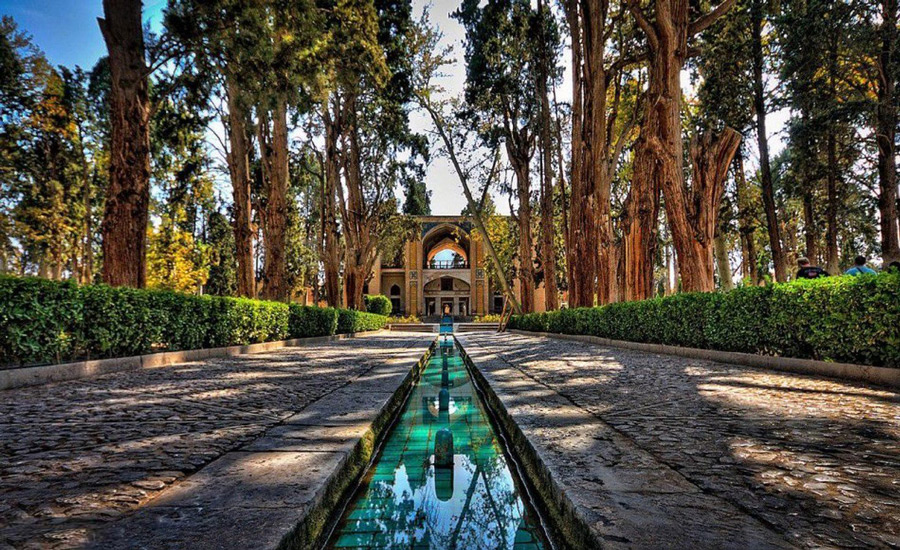
Water and Fountains
2. Floral Designs in Persian Jewelry: A Reflection of Nature’s Beauty
The floral motifs that are so central to Persian gardens are beautifully rendered in Persian jewelry, where they symbolize the natural beauty and divine perfection found in gardens. Flowers, leaves, and blossoms are common design elements in traditional and modern Persian jewelry, often intricately engraved, carved, or shaped into delicate forms.
Roses and Lotus Flowers: Symbols of Love and Rebirth
In Persian jewelry, flowers like roses and lotuses are often used to create a sense of femininity and delicacy. These motifs are associated with love, fertility, and the cyclical nature of life, drawing parallels to the natural cycles found in Persian gardens.
- Rose-Inspired Designs: The rose, which is a prominent feature in Persian poetry, gardens, and art, is often seen in pendants, earrings, and bracelets. These designs usually depict delicate rose petals, either engraved into gold or silver or represented as three-dimensional floral charms.
- Lotus Flower Motifs: The lotus flower, which symbolizes purity and rebirth, is often represented in rings and necklaces, especially in bridal and ceremonial jewelry. The lotus also symbolizes enlightenment, making it a powerful motif in pieces meant to convey spiritual significance.
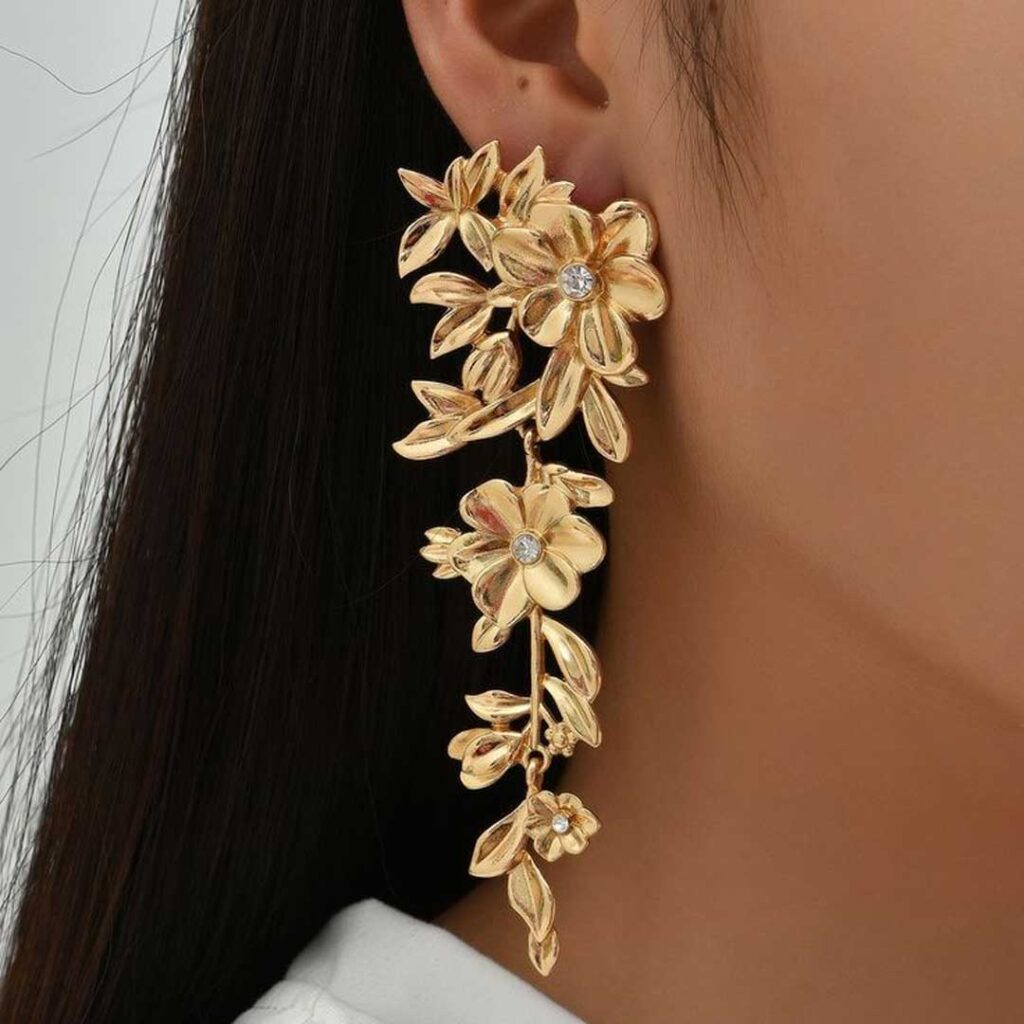
Flower-shaped Earrings and Pendants
Cypress Trees: Eternity in Jewelry
The cypress tree, a towering feature in many Persian gardens, represents immortality and is often used in Persian jewelry to symbolize eternal life. Its slender and elegant form makes it a perfect motif for pendants, rings, and bracelets.
- Cypress Pendants: Silver or gold pendants shaped like cypress trees are common in Persian jewelry, and often used as symbols of endurance and resilience. These pieces may be worn to convey the wearer’s strength and spiritual connection to nature.
- Tree of Life Designs: The tree of life, a common theme in Persian art, is sometimes depicted with elements resembling the cypress tree, serving as a symbol of eternity and connection between the earthly and spiritual realms.
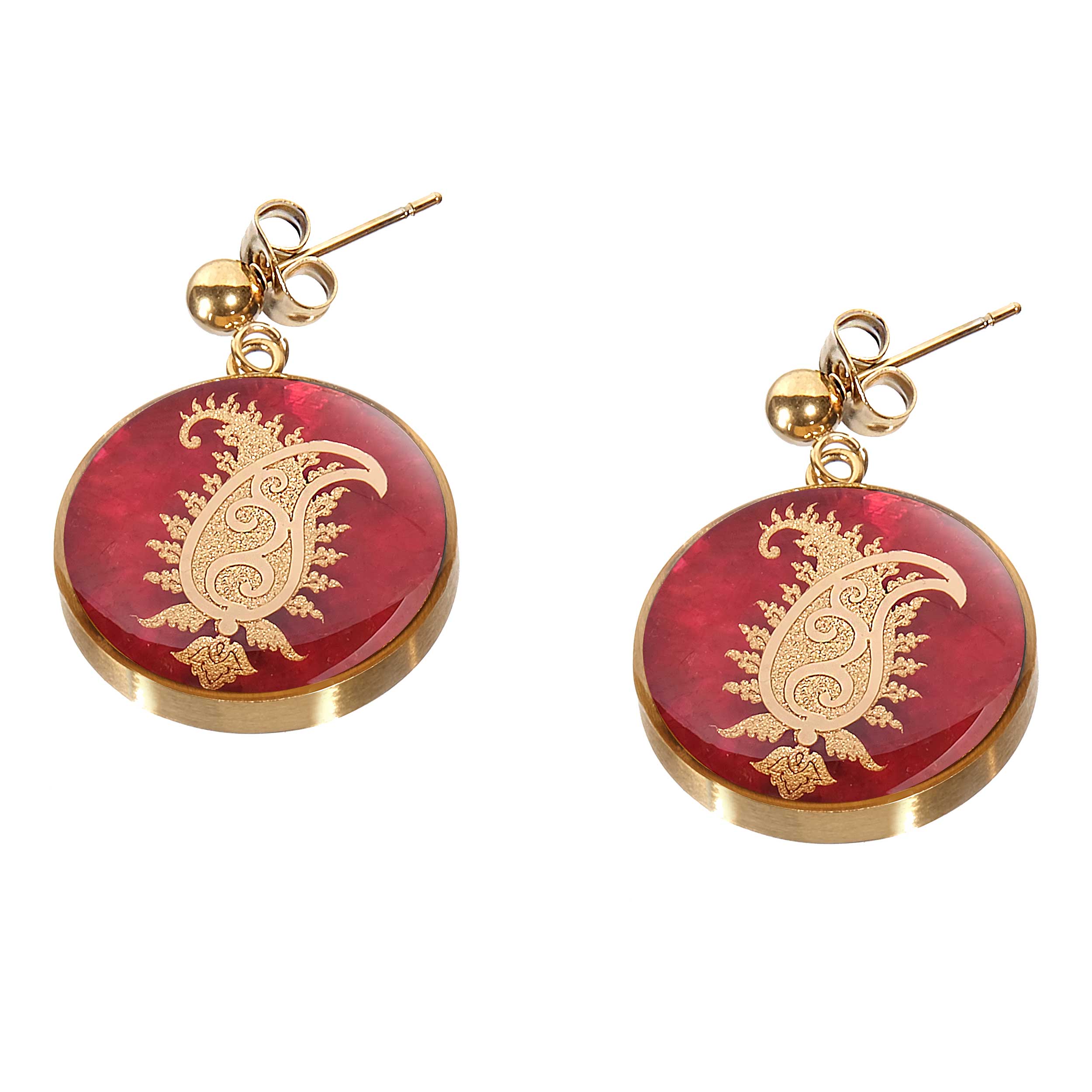
Cypress Tree
3. Geometric Patterns: The Harmony of Persian Gardens in Jewelry
The geometric designs of Persian gardens, which are often characterized by their mathematical precision and symmetry, are reflected in the detailed patterns found in Persian jewelry. These geometric designs are not only aesthetically pleasing but also carry deep symbolic meanings, representing balance, order, and infinity.
Chahar Bagh and Symmetry in Jewelry
The Chahar Bagh (four-part garden) design is based on the concept of harmony between man and nature, a central theme in Persian art and architecture. This layout is echoed in Persian jewelry designs that incorporate symmetrical patterns and repetitive motifs.
- Bracelets and Rings with Symmetrical Patterns: Jewelry pieces, particularly bracelets and rings, often feature geometric patterns inspired by the symmetrical paths and water channels of Persian gardens. These patterns reflect the spiritual significance of balance and are designed to evoke a sense of calm and order in the wearer’s life.
- Square and Circular Motifs: Square and circular motifs, frequently seen in Persian garden layouts, are mirrored in jewelry designs, where they represent the unity of the four elements (earth, water, air, and fire) and the cycle of life. These shapes are commonly used in pendants and earrings, where their symmetry creates a visual representation of the interconnectedness of life.
Tilework and Repeating Patterns
Persian gardens often feature beautifully intricate tilework, with repeating floral and geometric patterns that serve as both decoration and spiritual symbolism. In Persian jewelry, these repeating patterns are translated into engraved metalwork, filigree, and inlaid gemstones.
- Filigree and Granulation: Persian jewelers have long used filigree and granulation techniques to create delicate, lace-like patterns that mimic the intricate tilework found in Persian gardens. These techniques are often used to create brooches, bracelets, and earrings that showcase the jeweler’s craftsmanship and attention to detail.
- Inlaid Gemstones: Turquoise, lapis lazuli, and other precious stones are often set in repeating patterns to mimic the vibrant colors of Persian tilework. This technique is particularly popular in rings, necklaces, and bracelets, where the gemstones symbolize the lush flowers and clear water channels of Persian gardens.
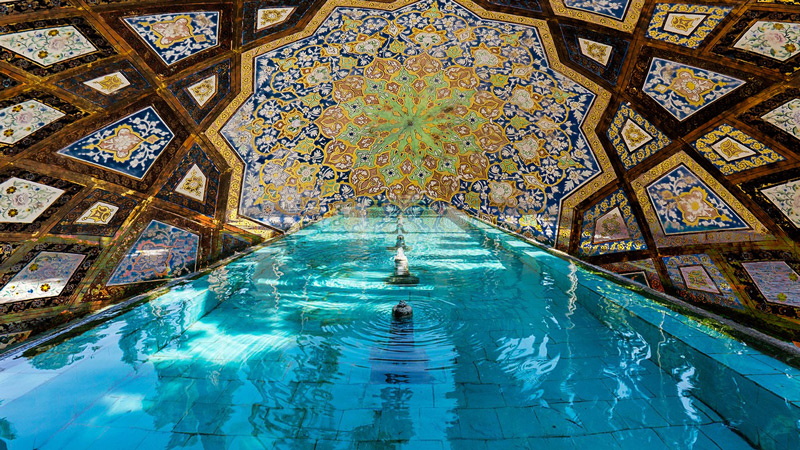
Tilework and Repeating Patterns – Fin Garden
4. Modern Interpretations of Persian Garden Motifs in Jewelry
Contemporary Iranian jewelry designers continue to draw inspiration from the beauty of Persian gardens, creating modern interpretations of floral and geometric patterns. These designs maintain the spiritual and cultural significance of the garden while incorporating minimalist and modern elements that appeal to global audiences.
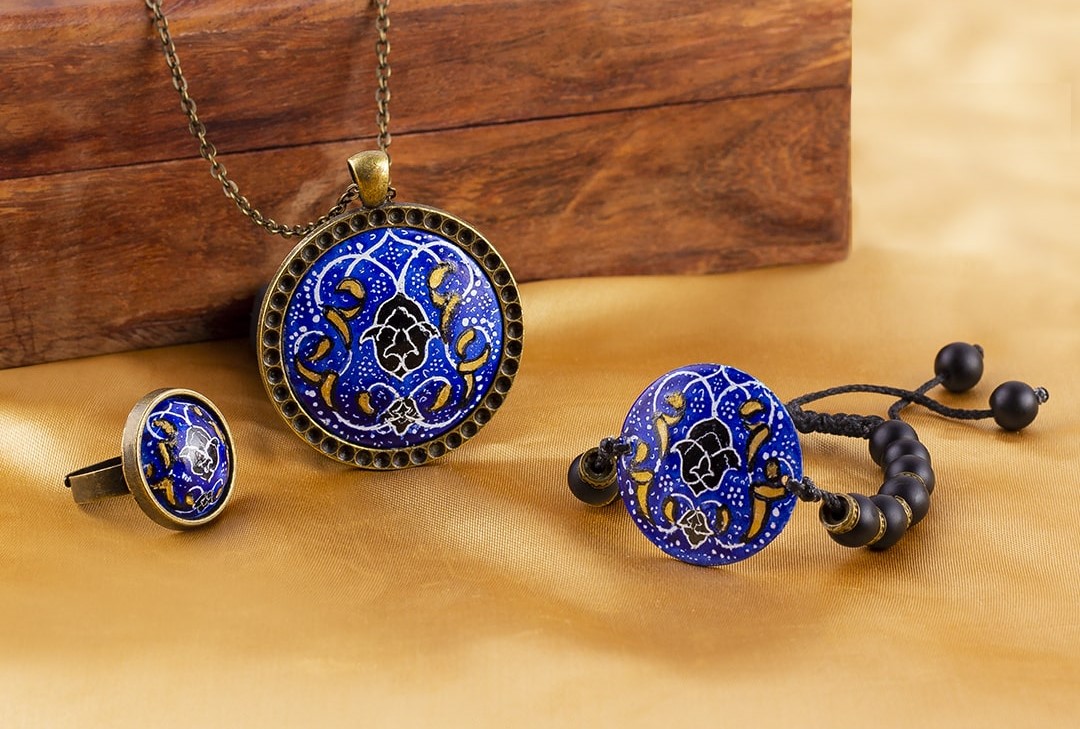
Minakari Necklaces and Earrings
Minimalist Floral Jewelry
In modern Persian jewelry, floral motifs are often simplified into elegant, minimalist designs. These pieces feature delicate outlines of flowers like roses and lotuses, with subtle engravings or metal cutouts that evoke the beauty of Persian gardens without overwhelming the wearer’s look.
- Gold and Silver Rose Pendants: These modern pieces feature clean lines and simple shapes, often focusing on a single rose or flower as the central motif. The design highlights the natural beauty of the flower while maintaining a sleek, contemporary aesthetic.
- Lotus Stud Earrings: Lotus earrings, with their minimalist design, have become popular in both everyday wear and ceremonial jewelry, reflecting a balance between Persian tradition and modern style.
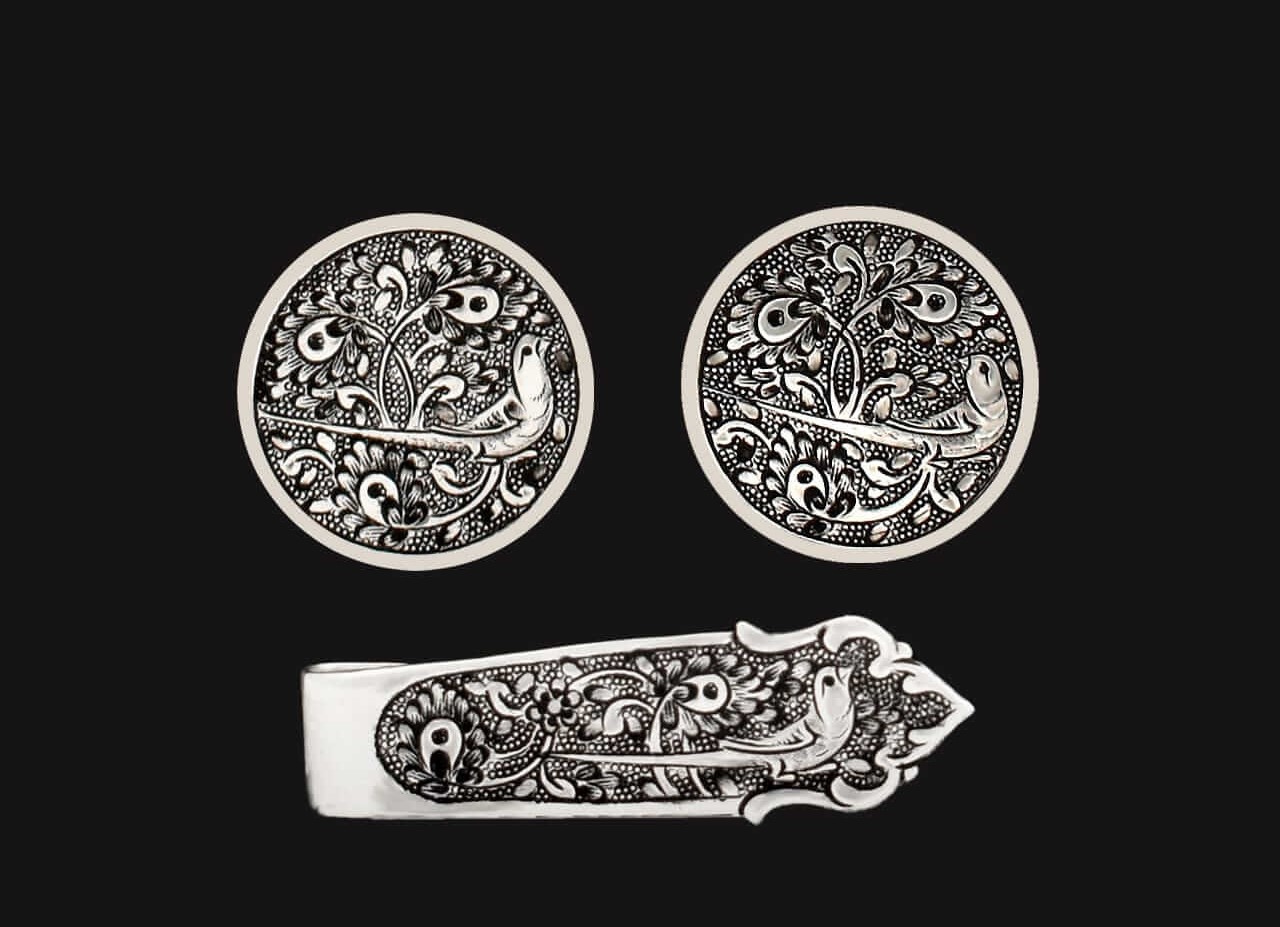
Silver Cuffs with Intricate Patterns
Geometric Jewelry with a Contemporary Twist
Modern designers often reinterpret the geometric patterns of Persian gardens in new and innovative ways, creating statement pieces that blend traditional motifs with abstract forms. These pieces often feature bold shapes and contrasting materials to create a unique, contemporary look.
- Geometric Cuffs and Bangles: Inspired by the symmetrical layouts of Persian gardens, cuffs, and bangles are designed with intricate, repeating geometric patterns. These pieces often feature cut-out designs or layered metals, giving them a modern edge while paying homage to Persian craftsmanship.
- Abstract Garden-Inspired Rings: Rings with abstract geometric designs inspired by Persian gardens are becoming increasingly popular in contemporary Persian jewelry. These rings often feature open spaces and layered shapes, symbolizing the balance between nature and human creation.
Conclusion: The Timeless Beauty of Persian Gardens in Jewelry Design
The influence of Persian gardens on jewelry design is a testament to the deep connection between nature, spirituality, and art in Persian culture. Whether through delicate floral motifs or intricate geometric patterns, the beauty of these gardens is mirrored in jewelry that reflects the balance, harmony, and timeless elegance of the natural world.
At LetsGoYelo, we honor the tradition of Persian garden-inspired jewelry by offering a collection of handcrafted pieces that celebrate the beauty of floral and geometric designs. Explore our selection and discover how the legacy of Persian gardens continues to inspire modern jewelry with a touch of timeless elegance.
